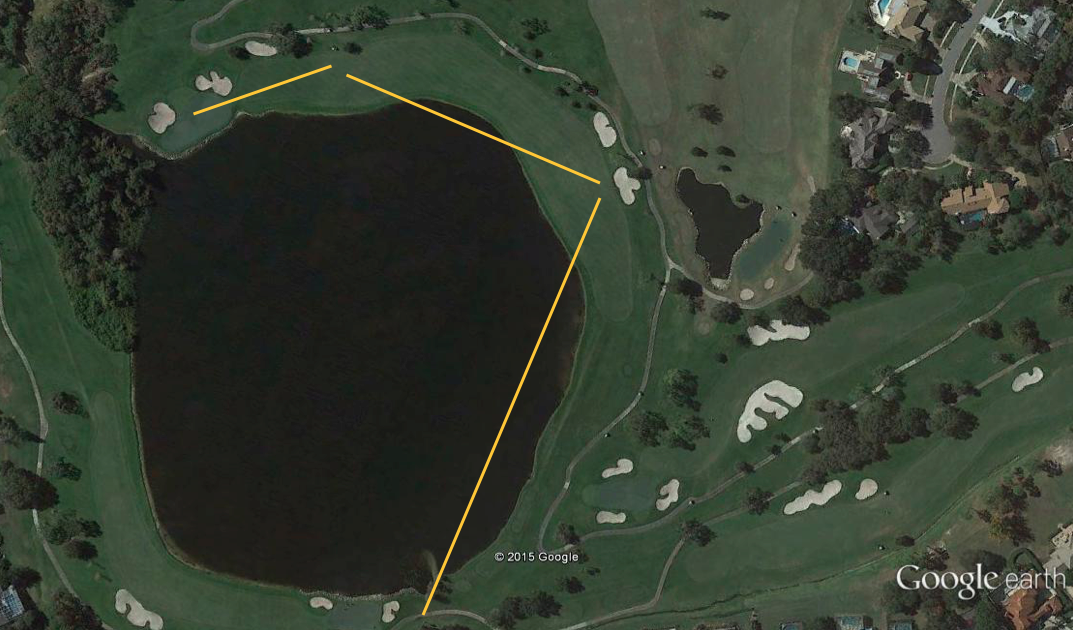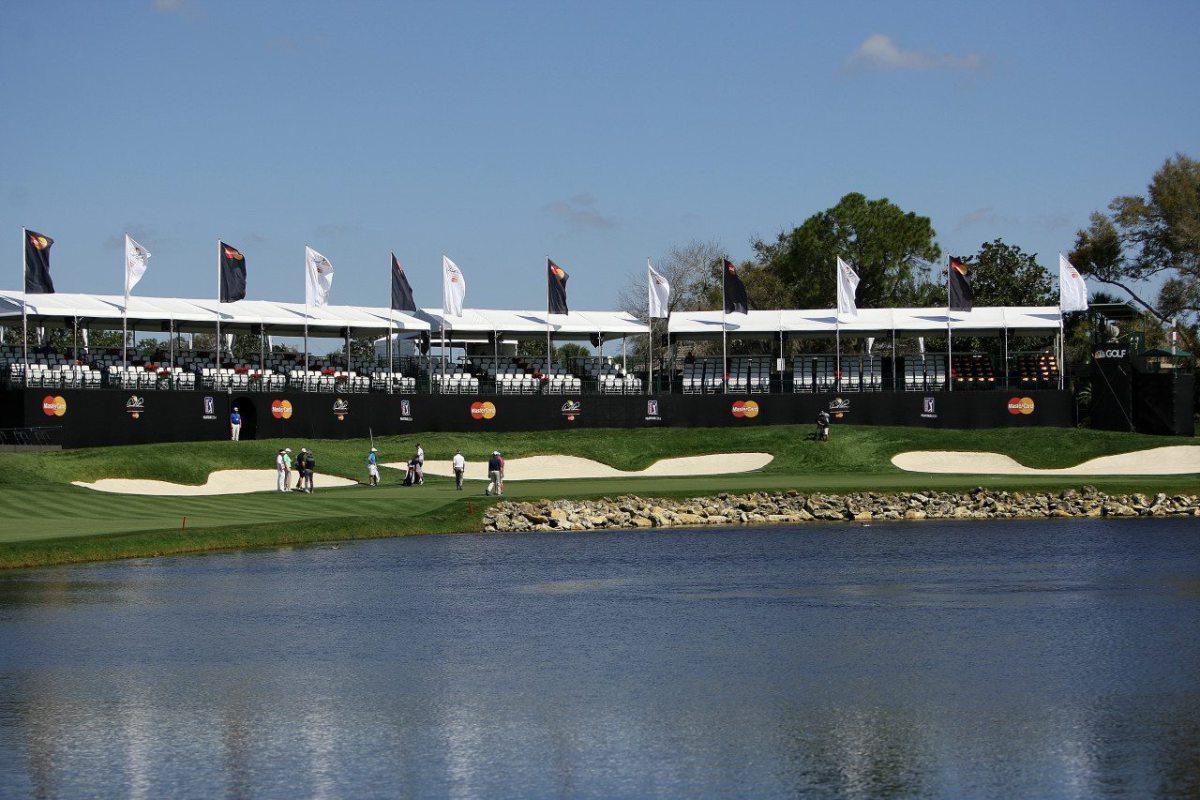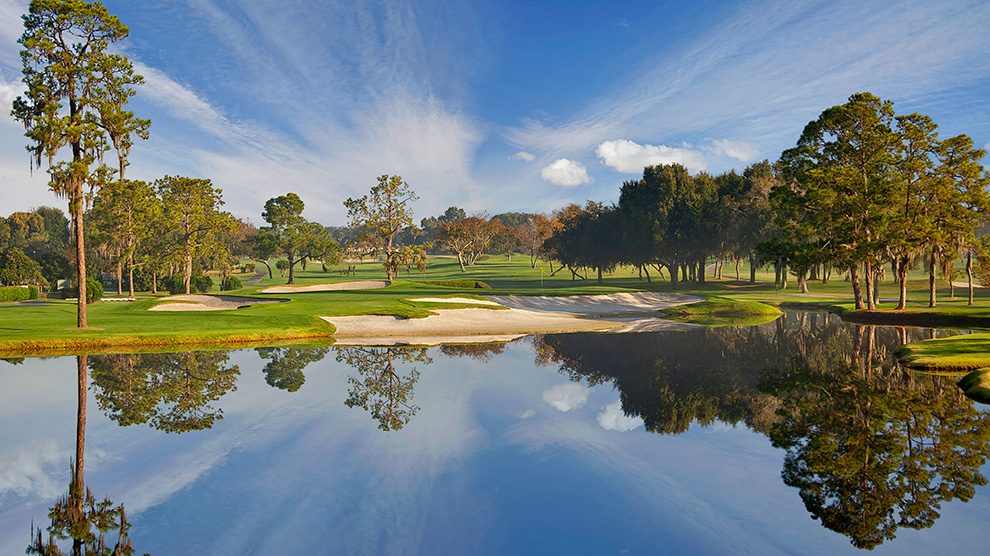The Florida Swing continues this week at the Bay Hill Club & Lodge for 38th playing of the appropriately renamed Arnold Palmer Invitational. Being the first playing of the tournament since the death of Mr. Palmer, emotions are surely going to be running at a different level this entire week(end).
Serving as hosts this week are Peter Jacobsen, Graeme McDowell, 10-time major winner Annika Sörenstam, former Secretary of Homeland Security Tom Ridge and two-time U.S. Open winner Curtis Strange -- all of whom will surely be sharing their fondest memories for the King.
Bay Hill Club and Lodge architecture and history
In 1970, Arnold Palmer, already golf’s biggest celebrity, took a five-year lease on the property with an option to buy, and Bay Hill had a new beginning. And since taking ownership in 1975 (and until his death), Palmer was almost constantly tinkering with the course.
From 1966 to 1978 the Florida Citrus Open was contested at Rio Pinar Country Club. However, in 1979 the tournament was moved to Bay Hill at Mr. Palmer’s behest, and the tournament has grown in prestige ever since. Another such move occurred when the PGA Tour elevated the tournament to elite invitational status in 1984, thus reducing the size and insuring the quality of the field.
Bay Hill consists of three 9-hole courses: the Challenger, Champion and Charger. Dick Wilson built the Challenger and Champion courses in 1961, which combine to host the Invitational. Bob Simmons added the Charger in 1968 (which isn’t played during the tournament). Renovations to the courses by Palmer and Ed Seay in 1989 and in 1997 added length and a new design to many of the greens. The most recent and substantial changes came in 2009. So, while it’s a Dick Wilson design, it has Mr. Palmer’s fingerprints all over it.
The most notable aspect of the course is the forced carries. The mostly flat track’s primary defense against scoring is veritable potpourri of bunkers, lakes and length. No shortcuts here -- at least ones that don't require a massive drive. While the course is open to the public (if you’re a resort guest) the membership certainly appreciates high-ball hitters. Because the only way to score is by hitting long, towering approach shots that land softly. If you look at the numbers from 2006-2016, 34 percent of approach shots came from beyond 200 yards. So, good luck with that if you’re not a pro.
With 84 bunkers and seven water hazards, it should come as no surprise when/if you see a slew of crooked numbers, and even a few breaching double-digits before the week is done. In fact, since 1983, the sixth hole has produced 22 scores in the double-digits. The next closest hole, the 15th at English Turn G&CC, has 14 such scores...and that course hasn’t even hosted an event since 2004.
Holes to Watch
Hole 1: Players need to make sure they’ve chugged their morning coffee or 5-Hour Energy shot because the first hole is no gimme. Playing as one of the hardest holes on the course, with a scoring average above par, players see two large bunkers waiting for pushed tee shots that don’t hug the curve of this 461-yard, dogleg-left par 4. Once in the fairway a long approach shot is required into a heavily bunkered green.

Hole 6: The 555-yard par 5 wraps around the largest lake on the course creating a U-shape. Players that want to reach the green in two, will need to make a couple of daring shots across the edge of the lake. While this hole produces the occasional eagle and plenty of birdies, it will also claim the occasional snowman.
Hole 17: From the elevated tee of this 221-yard par 3, players see a green that’s amply protected by water on three sides (the pond turns into a creek not too far behind the green) with bunkers protecting the short right and long left. The photogenic beach bunker was reshaped and contoured back in 2009 to allow for better drainage, playability and visibility. Its smaller-than-most Bay Hill green complexes requires a solid shot to hold and get a good look at birdie.

Hole 18: What looks to be a fairly simple 458-yard par 4 with a wide fairway, this finishing hole has had it’s share of interesting shots and scores. The fun comes on the approach (if you couldn’t already sense a theme). The large, kidney-shaped green is fronted by rocks and water, requiring a longer carry to the right half. Probably the most famous shot at this hole was Brandt Snedeker’s, where his approach shot looked destined for the water until it hit the rocks not once, but twice and ended up within 20 feet of the hole. Look for more drama if the wind is up/swirling.

